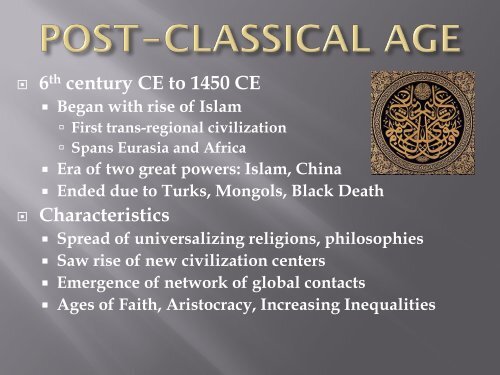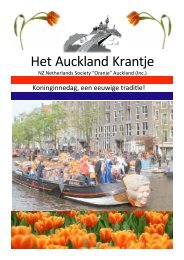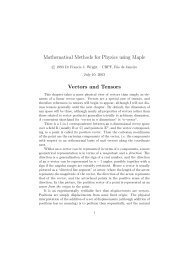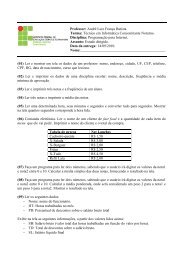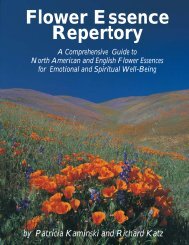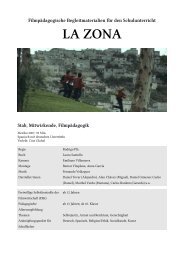2 Review Post-Classical 500 - 1450.pdf - Google Sites
2 Review Post-Classical 500 - 1450.pdf - Google Sites
2 Review Post-Classical 500 - 1450.pdf - Google Sites
You also want an ePaper? Increase the reach of your titles
YUMPU automatically turns print PDFs into web optimized ePapers that Google loves.
6 th century CE to 1450 CE<br />
Began with rise of Islam<br />
First trans-regional civilization<br />
Spans Eurasia and Africa<br />
Era of two great powers: Islam, China<br />
Ended due to Turks, Mongols, Black Death<br />
Characteristics<br />
Spread of universalizing religions, philosophies<br />
Saw rise of new civilization centers<br />
Emergence of network of global contacts<br />
Ages of Faith, Aristocracy, Increasing Inequalities
State Structure<br />
Most systems were aristocratic in nature<br />
Most systems were decentralized<br />
Influence of system was often more important<br />
Agents of Change<br />
Often trade or economic<br />
Pastoral nomads and migration less important<br />
Universalizing Faiths<br />
World System or Global Contacts<br />
No world system yet (Americas, Oceania not included)<br />
Afro-Eurasia was a system though<br />
Women in the Era<br />
Less Centralized states: women have more influence<br />
Less Aristocratic states: women have more influence<br />
Increasing institutionalization means fewer rights
An Age of Faiths: Religions and Missionaries<br />
Christianity<br />
Roman Catholicism<br />
Orthodoxy: Cyril and Methodius<br />
Buddhism<br />
Merchants spread it to East Asia, Southeast Asia<br />
Pilgrimages to South Asia<br />
Islam<br />
Pilgrimage<br />
Dar al Islam as created by the vast conquests<br />
Sufi missionaries and merchants<br />
Jews and Nestorians<br />
Southeast Asia: Spread of Hinduism, Buddhism, Islam<br />
Trading Patterns<br />
Muslim system including Sub-Saharan Africa<br />
Indian Ocean Systems: East Africa to Southeast Asia<br />
East Asia<br />
Central Asia: The Silk Road and Nomads<br />
Western European – Mediterranean and North Sea
Bedouin Origins<br />
Muhammad and Early Islam<br />
The Quran, The Jihad<br />
The Sharia and Ulama<br />
The Five Pillars<br />
The Orthodox Caliphs<br />
The Caliphate<br />
The Sunni-Shia Split<br />
The Umayyads and Abassid<br />
Dhimmi status and “People of the Book”<br />
The Sultan and Vizier<br />
The Roles of the Turks and Mongols<br />
Other Muslim Worlds<br />
Muslims in Spain<br />
Muslims in Central Asia<br />
Muslims in Africa<br />
Muslims in Southeast Asia<br />
Structural Change: Fragmentation:,Sultans, Viziers, Harem<br />
Dar al Islam provides cultural, religious unity to region
Sub-Saharan Africa<br />
Sahel: Ghana, Mali, Songhai<br />
East Africa: Swahilis, Ethiopia<br />
Southern Africa: Kongo, Zimbabwe<br />
Tribute empires, syncretic blending<br />
South Asia<br />
<strong>Post</strong>-Harsha: Regional divisions, caste stability<br />
From Muslims to the Sultanate of Delhi<br />
Arabs conquer Al-Sind, raid, trade into N. India<br />
Turks establish a Mameluk Sultanate<br />
Southern India: A Hindu Renaissance, commercial<br />
Vaisaya caste expands with commere
The 2 nd Warring States Period 220 – 589 CE<br />
Nomadic conquerors intermixing with sedentary Chinese<br />
Spread of Buddhism<br />
Sui Dynasty reunited China; the Grand Canal<br />
Tang Dynasty<br />
The Golden Age of China<br />
Bureaucracy and Civil Service through Confucian exams<br />
Scholar Gentry<br />
Song Dynasty<br />
Merchants have upper hand<br />
Great technological and commercial innovation<br />
Gunpowder, compass, porcelain, movable type printing<br />
Why was China so strong<br />
Twice flowering rice increased harvests<br />
Settlement of marginal lands, use of terraces<br />
Capitalism as opposed to mercantilism<br />
Currency based economy<br />
Neo-Confucianism blends Confucianism, Daoism, Buddhism
Sinification vs. Indigenous Development<br />
Tribute System vs. Annexation<br />
Japan<br />
Yamato Clan unifies Japan (Shinto)<br />
Nara: Prince Shotoku copies Chinese style of state (Confucianism)<br />
Buddhism enters through contacts<br />
Heian: Japanese develop their own culture<br />
Court Elite vs Rural Elite vs majority of population<br />
Military elite assumes increasing power not scholar gentry<br />
Korea<br />
Korguyo; Silla unifies Korea<br />
Confucian but not as rigid; Buddhism as balance<br />
Slavery continues to exist in large numbers<br />
Vietnam<br />
Chinese attempts to control area until 1000 CE<br />
Vietnamese independence: Sinified elite different from commoners<br />
Women have great influence at court, in local matters
Transition between Indian Ocean, China<br />
Decentralized State Structures, Feudalism,<br />
Tribute<br />
Funan<br />
Khmer Empire<br />
Srivijayan Empire<br />
Malacca<br />
Interactions<br />
Commerce and Trade<br />
Spread of Religions: Hinduism, Buddhism, Islam<br />
Syncretism<br />
Hierarchical Systems Different: Gender
The Byzantines<br />
Insulated Europe from Arabs, Turks<br />
Civilized, Christianized the Slavs especially Russians<br />
Preserved Greco-Roman Culture<br />
Helped spread Arabic learning to the west<br />
Monasticism was an Eastern development<br />
The Schism<br />
A contest of wills between the pope, emperor<br />
When west was young, pope was weak<br />
As west emerged, pope got stronger<br />
The split was over the authority of the pope<br />
What occurred in 1054 was many centuries in coming
Blending Traditions<br />
Christianity, Germanic Custom, Roman Law<br />
The Structures from 5 th century to 1000 CE<br />
From Kingdoms to the Franks to the Holy Roman Empire<br />
The Roman Catholic Church<br />
Caesaro-papism or Papal Supremacy<br />
The Investiture Crisis<br />
Monasticism<br />
Feudalism<br />
Aristocracy, reciprocity, and primogeniture<br />
Local rule, local self-defense, fiefs, vassals<br />
Manorialism including serfdom, manors, autarky<br />
Vikings: Raid, Trade, Settle, New States<br />
A Changing Europe: After 1000 CE<br />
Rise of Towns and with it the rise of the bourgeoisie<br />
Commerce and Great Fairs: use of money rather than barter<br />
Scholasticism and Chivalry<br />
The Black Death leads to labor shortages<br />
Peasant Rebellions<br />
Wars devastate the aristocracy<br />
Rise of centralizing monarchs using law, taxes not custom<br />
The Crusades as Contacts for Change
Expanded Warfare<br />
100 Years War: Technology vs. Aristocratic Chivalry<br />
Reconquista in Iberia<br />
The New Monarchy and Nationalism<br />
Centralizing royalty vs. decentralized feudalism<br />
Spain, England, France<br />
The Babylonian Captivity and Great Schism<br />
The papacy was undermined by squabbling<br />
Never theological but was always political<br />
People began to question need for the pope<br />
Heresies occurred as did some attempts to reform church<br />
The Renaissance<br />
An expression of commercial prosperity<br />
Began in Italy in the 1300s with emphasis on arts<br />
The “We/Sacred” gave way to “I/Secular”<br />
Glorification of the <strong>Classical</strong> produced new ideas<br />
Humanism and Science
The Impact of the Mongols<br />
Destroyed all existing state structure<br />
Destroyed agriculture in some areas<br />
Left a vacuum upon collapse, helped create new systems<br />
Forced states, peoples to adapt, adopt to survive<br />
Increased contacts between distant Eurasian parts<br />
Spread Diseases<br />
Exchanged Technologies<br />
Movement of Peoples
Paleolithic, Neolithic Peoples Existed During this period<br />
Americas also had these phases, which lasted longer<br />
Nomadic hunters, gatherers, fishers<br />
Settled agricultural communities in many places of Americas<br />
Subsistence vs. surplus; Irrigation systems<br />
Differentiated labor systems and hierarchy<br />
Ceremonial centers and pyramids<br />
Americas <strong>Post</strong>-<strong>Classical</strong> Civilizations<br />
Centers<br />
Mesoamerica<br />
Toltecs<br />
Mayans<br />
Aztec<br />
Andean South America<br />
Chimu, Mohica<br />
Incas<br />
Contacts Between Centers Limited but corn did spread<br />
Technology had not changed much over millennia<br />
Roles of Merchants, Roles of Diplomats
Cities<br />
Cosmopolitan cultures<br />
Centers of exchanges and commerce<br />
Dar al Islam and China<br />
Both civilizations were centered on cities, urban cultures<br />
Had most of the world cities with large populations<br />
Geographic World<br />
China: Chang-an (Xian), Hangzhou, Canton<br />
Central Asia: Samarkand<br />
West Africa: Timbuktu<br />
East Africa: Swahili Cities<br />
Dar al Islam: Baghdad, Cairo, Cordoba<br />
Western Europe: Venice, the Hansa<br />
Southeast Asia: Srivijaya, Malacca<br />
Southern Asia: Calicut<br />
Eastern Europe: Kiev, Constantinople, Novgorod<br />
Meso-Americas: Teotihuacan, Tikal, Tenochitlan
Cultural Diffusion through migration or Indigenous Development<br />
Migrations<br />
Agricultural Peoples: Bantus<br />
Comparable to Germanic migrations (but Bantu were usually not invaders)<br />
Settlement of East, Central, Southern Africa<br />
Diffusion of iron-making, farming, herding<br />
State building: Kongo, Swahili trading cities<br />
Nomadic Peoples<br />
Comparable to Hunnic and Indo-European migrations<br />
Arab Bedouins<br />
Turks: Seljuk and Ottoman<br />
Disrupted Abbasids, Byzantines, Central Asia<br />
Introduced mameluk armies, Sultans<br />
Produced the first European crusades<br />
Mongols and Mughals<br />
Disrupted most of Eurasia<br />
Created a power vacuum<br />
Contacts as Migration<br />
Pilgrimage: Buddhist, Muslim, Christian<br />
Commercial contacts along caravan and sea routes<br />
Scholarly exchanges between Muslim and non-Muslim worlds
Demographic Shift<br />
A change in demographic patterns<br />
Abrupt decrease in population due to illness<br />
6 th century Bubonic Plague<br />
Preceded spread of Arabs<br />
Strongest impact was in SW Asia, East Africa<br />
Black Death or 14 th Century Bubonic Plague<br />
Originated in China<br />
Spread by Mongols throughout Eurasia<br />
Spread throughout Mediterranean by contacts<br />
Results<br />
Labor Shortages: fostered growth of free, paid labor<br />
Attacked old elites in cities producing new urban elites<br />
Broke back of Mongols, small states<br />
Forced states to create new means of taxation, military formations
Aristocracies: Called Gate Keepers<br />
European classes of “those who fight” and “those who pray”<br />
Capulis of the Aztecs and the nobles of the Mayans<br />
Brahmins and Kshatriyas of South Asia<br />
The landed scholar gentry (shi) of China<br />
The daimyos and samurai of Japan<br />
The Peasants: Those Who Work<br />
Shudras and Pariahs of South Asia<br />
The Peasants of East Asia<br />
The Serfs and peasants of Western Europe, Eastern Europe<br />
The serf like capulis of Aztecs, Mayan caste peasants<br />
The sharecroppers and tenant farmers of the Arab world<br />
The commercial classes are agents of change<br />
Gender Roles<br />
The patriarchical system increases with aristocratic societies, warrior societies<br />
Increasing examples of subordination of women<br />
Footbinding in China; painted faces in Japan<br />
Veils, purdah in SW Asia and India; suttee in India<br />
Women as legal minors, disenfranchised in Western Europe<br />
Women as baby factories: Aztecs<br />
Exceptions to the Rule<br />
Women in the Catholic Church: renounce sexuality and acquire equality<br />
Women in Bantu Africa – farmers, merchants, some rulers, matrilineal descent<br />
Women in Southeast Asia – merchants, commerce, some rulers, matriarchy
The Muslims including South Asia<br />
Preserved Past Learning Especially the Greeks<br />
Created New Learning<br />
Spread other civilizations‘ accomplishments<br />
Science, Math, Geography, History, Philosophy<br />
The Chinese and Japanese<br />
Golden Age of Art and Poetry under Tang and Song<br />
The Heian Age in Japan – first novels, pillow books<br />
Ming tend to preserve culture or turn the clock backwards<br />
The Byzantines<br />
Icons, Hagia Sofia, Cyrillic<br />
Western Europe<br />
Romanesque and Gothic Architecture<br />
Epics and Romances<br />
Scholasticism<br />
Mesoamerica<br />
Higher mathematics<br />
Astronomy and Calendars<br />
BUT: Most of Technology remained borderline Neolithic
Compare and contrast Japanese and Western<br />
European feudalism. (Note you might want to<br />
consider adding Zhou feudalism).<br />
Compare and contrast political and social<br />
institutions in Western and Eastern Europe.<br />
Analyze the roles and functions of cities in<br />
major cultures (Islamic, West European, East<br />
Asia, Western Africa, Eastern Africa).
Compare trading alliances and patterns of<br />
trade in any two of these regions:<br />
Northern Europe (Hansa)<br />
Mediterranean (Venice, Genoa)<br />
Abbasid Muslim world<br />
The Silk Road of Central Asia<br />
Trans-Saharan Trade Route<br />
East Africa/ Swahili cities<br />
The Indian Ocean.<br />
Compare the roles of politics, social classes,<br />
and gender in Christianity and Islam.
Analyze gender and social systems and any<br />
changes over time as caused by interactions<br />
and religions such as the impact of Islam and<br />
Neo-Confucianism.<br />
Compare the Aztec and Inca Empire.<br />
Compare European, Sub-Saharan African,<br />
Southeast Asian and South Asian contacts<br />
with the Islamic world.
Compare the impact of the Mongol Empire on<br />
cultures and institutions in Eastern Europe,<br />
Middle East, and East Asia.<br />
Compare the impact of Turkish invasions on<br />
the Byzantines and Islamic worlds.<br />
Compare the Christian Crusades and Islamic<br />
Jihads.
Compare schisms in Christianity (Roman<br />
Catholic-Orthodox) and Islam (Sunni-Shia).<br />
Compare interactions in any two regions<br />
during this time period:<br />
Pre-Columbian Americas<br />
Eastern Europe<br />
Western Europe<br />
Sub-Saharan Africa<br />
Islamic World<br />
South Asia<br />
Southeast Asia
Trace the change and continuities of interactions<br />
between from 600 to 1450 CE in any historical region:<br />
Latin America; North America; Sub-Saharan Africa;<br />
SW Asia and North Africa; Western Europe; Eastern<br />
Europe; Central Asia; South Asia; Southeast Asia; and<br />
East Asia.<br />
Trace the changes and continuities in world trade<br />
from <strong>500</strong> BCE to 1000 CE in any one of the following<br />
regions: the Mediterranean, the Silk Road (Central<br />
Asia, East Asia, Southwest Asia), the Indian Ocean,<br />
Sub-Saharan Africa.
Trace the changes and continuities in world trade from <strong>500</strong><br />
to 1<strong>500</strong> CE in any one of the following regions: North<br />
Africa and SW Asia; Western Europe; Mesoamerica; Sub-<br />
Saharan Africa; the Indian Ocean; Central Asia; East and<br />
Southeast Asia.<br />
Trace the transformation in functions and structures of<br />
states from 600 to 1450 CE in one region: Western Europe;<br />
Eastern Europe; SW Asia; Sub-Saharan Africa; East Asia;<br />
Southeast Asia; South Asia.<br />
Trace the demographic changes from 600 to 1450 in any<br />
one region: Latin America, Western Europe, North<br />
America, Sub-Saharan Africa, Southern Asia, Southeast<br />
Asia, or East Asia.
Trace the transformation and impact of technology<br />
including manufacturing, transportation and<br />
communications from 600 to 1450 in any one region:<br />
North America; West Europe; East Europe; Sub-<br />
Saharan Africa; Southwest Asia and North Africa;<br />
South Asia; and East Asia.<br />
Trace the transformation of religion and philosophy<br />
from 600 to 1450 in any one region: East Asia; South<br />
Asia; Southwest Asia and North Africa; Western<br />
Europe; Eastern Europe; Southeast Asia and Sub-<br />
Saharan Africa.<br />
Trace the intellectual and artistic transformation from<br />
600 to 1450 in any one region: East Asia; South Asia;<br />
Southwest Asia; West Europe; East Europe.
Trace the transformation of social structures<br />
including gender and inequalities from 600 to 1450 in<br />
any one region: West Europe; Southwest Asia; Sub-<br />
Saharan Africa; South Asia; East Asia, and Southeast<br />
Asia.<br />
Trace the transformation in gender roles from 600 to<br />
1450 CE in any one region: the Muslim world, the<br />
Christian world, the Hindu world, the Confucian<br />
world, the Buddhist world, the world of the Central<br />
Asian nomad, in Mesoamerica, or in Sub-Saharan<br />
Africa.


